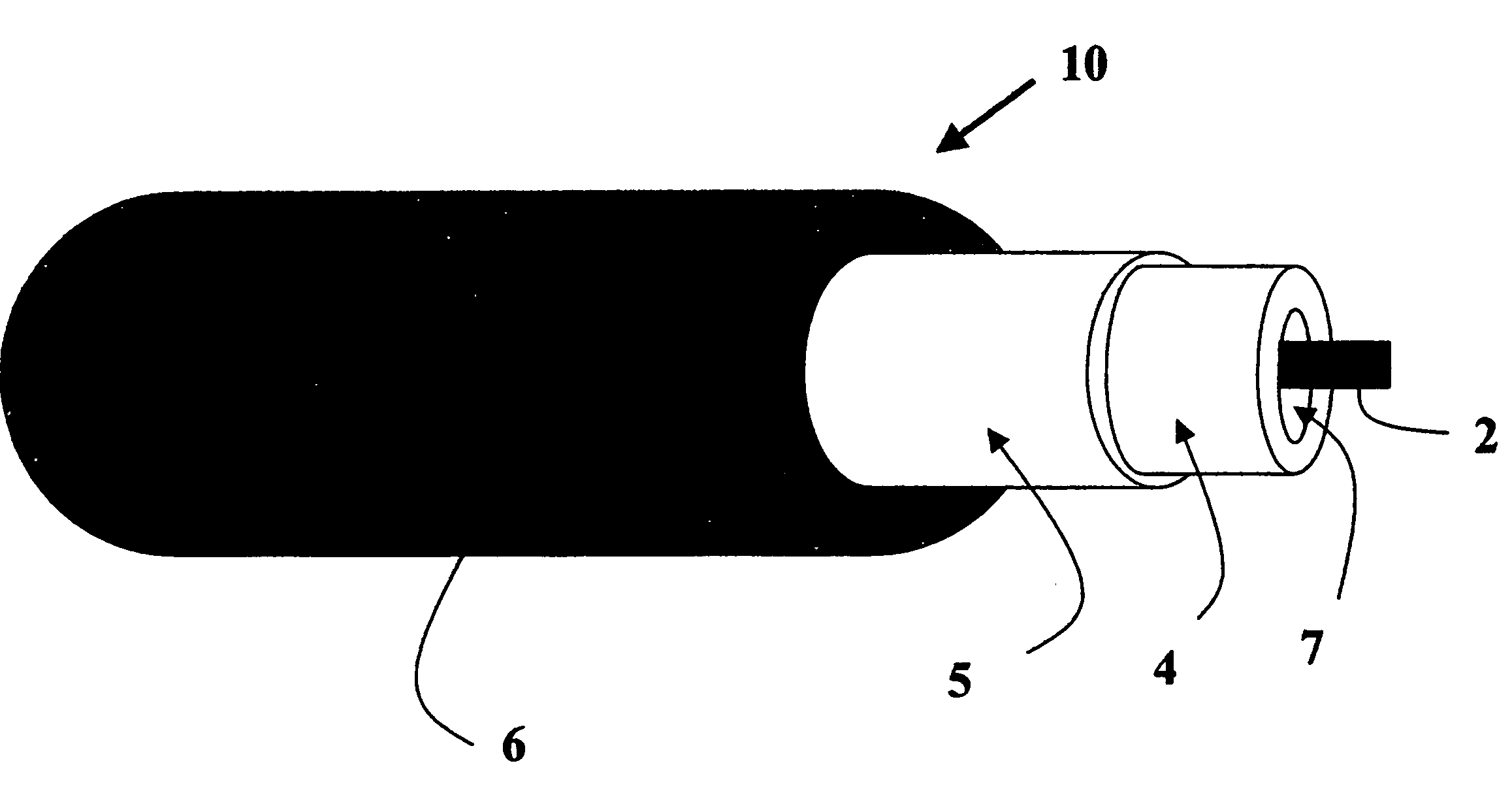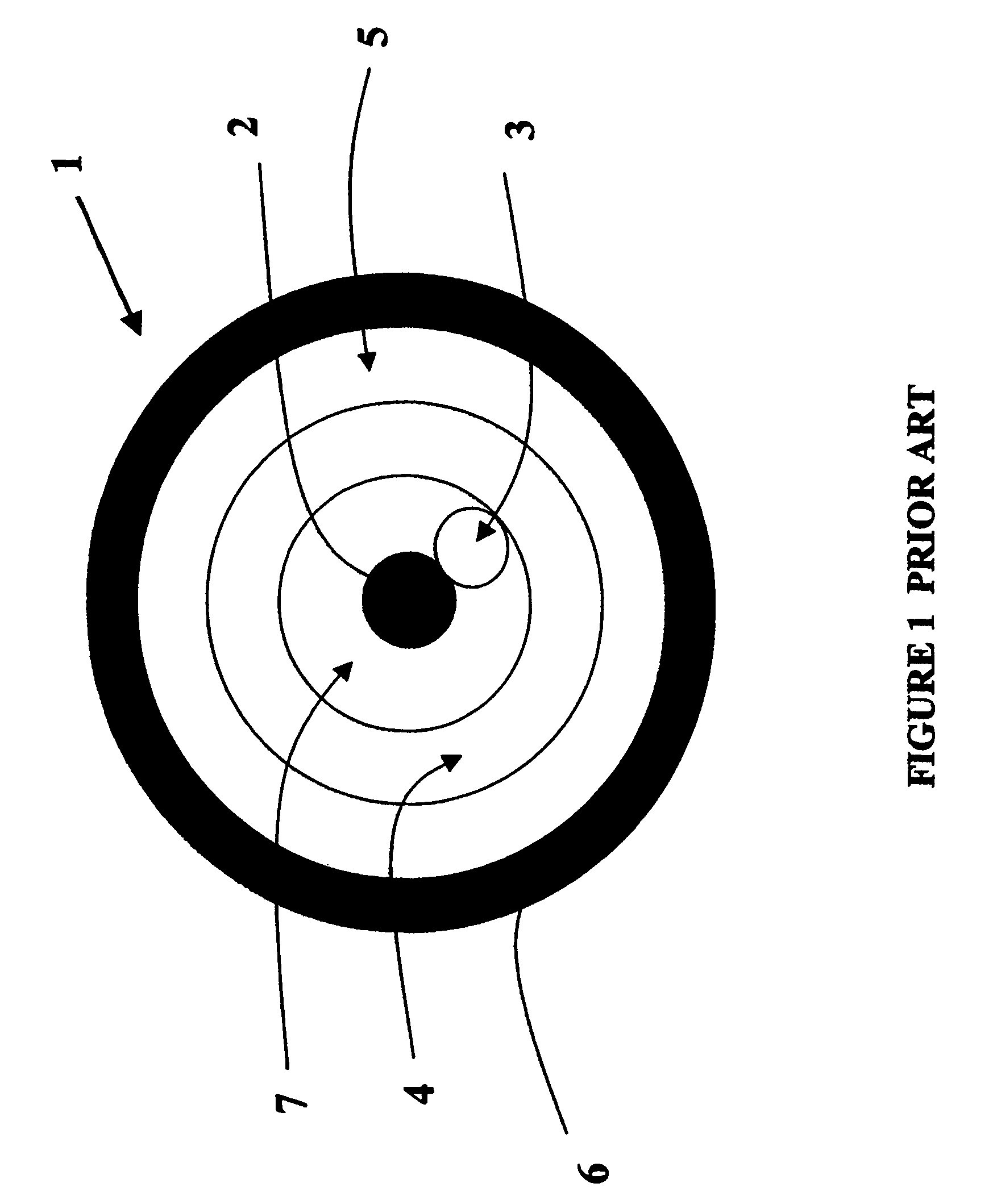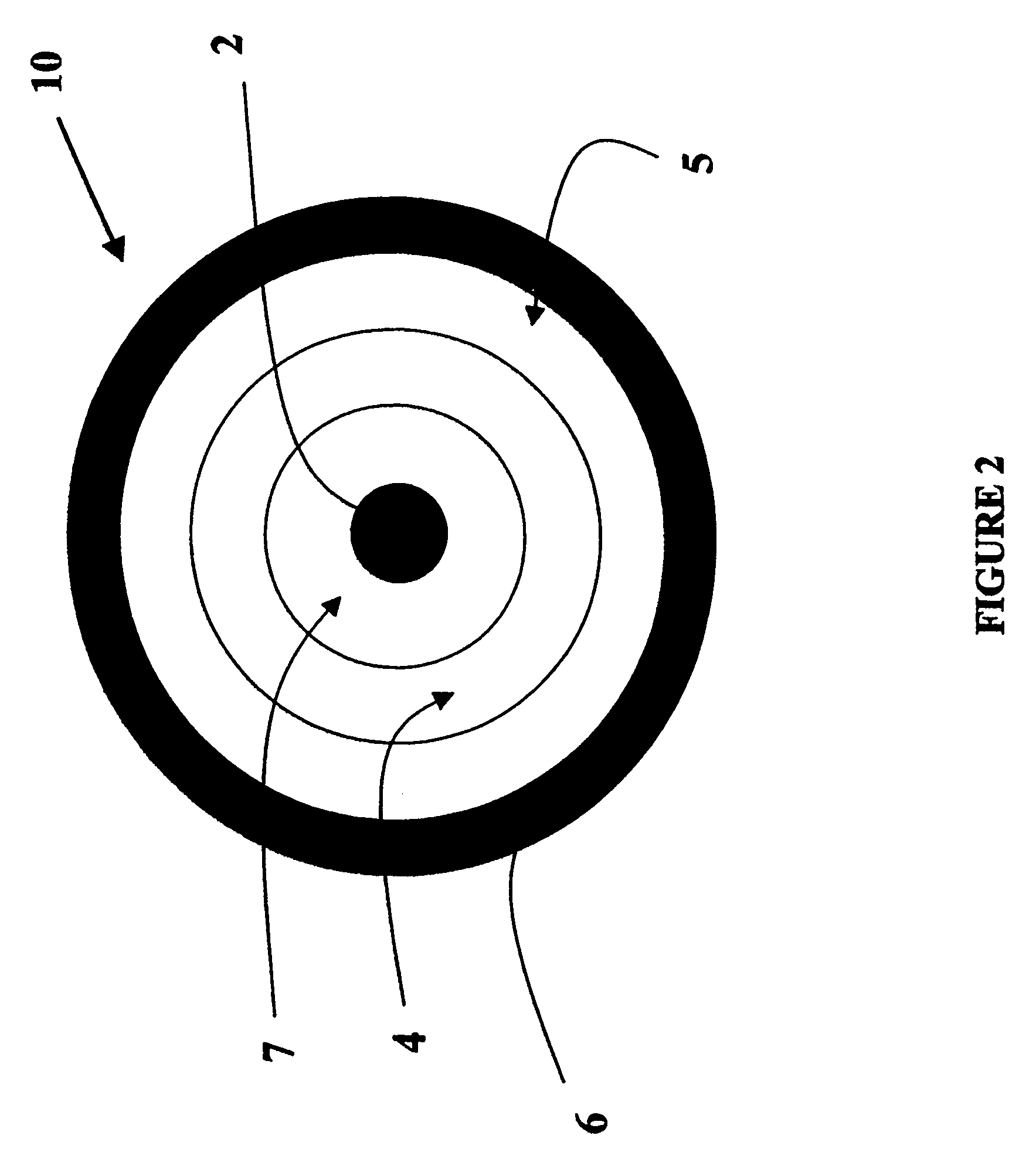Triboelectric, ranging, or dual use security sensor cable and method of manufacturing same
a technology of security sensor and triboelectric technology, applied in the direction of cable/conductor manufacturing, conductor, instruments, etc., can solve the problems of not providing any location data, using relatively complex and costly processing means, and cables can be more costly, etc., to achieve simple prior art manufacturing process, easy construction, and easy to manufacture
- Summary
- Abstract
- Description
- Claims
- Application Information
AI Technical Summary
Benefits of technology
Problems solved by technology
Method used
Image
Examples
second embodiment
[0093]FIG. 3 is an view of a sensor cable 10A constructed and manufactured according to the present invention. The sensor cable 10A shown has a similar construction to that of FIG. 2 with the exception of a thin dielectric layer 15 coated on the center conductor 2A. As is well understood by the skilled artisan, coated conductors are usually form using a thin dielectric layer with material, such as Teflon™. Other dielectric coatings such as PVC are also possible. With this construction the looseness is between the two plastic dielectric layers 15 and 4.
third embodiment
[0094]Another alternative is a twisted pair cable construction, for example, where separate dielectric coated wires are twisted together and possibly shielded. FIG. 4 is an view of a sensor cable 10B constructed and manufactured according to the present invention. The sensor cable 10B consists of a first conductive member 2B coated with a first dielectric layer 15B and loosely disposed within a dielectric tube 4 to move freely within an inner air gap 7, and a second conductive member 5B coated with a second dielectric layer 15B and twisted with the dielectric tube 4. While the two conductive members 2B and 5B are coated with corresponding dielectric layer 15A and 15B, it is readily understood that the dielectric coating may be omitted from the sensor cable construction. It is further readily understood that other cases such as dielectric 4 could be omitted as long as one of the two or more conductors is dielectric coated or jacketed.
[0095]For example, a standard category 5 (CAT5) tw...
PUM
| Property | Measurement | Unit |
|---|---|---|
| distances | aaaaa | aaaaa |
| temperature | aaaaa | aaaaa |
| flexible | aaaaa | aaaaa |
Abstract
Description
Claims
Application Information
 Login to View More
Login to View More - R&D
- Intellectual Property
- Life Sciences
- Materials
- Tech Scout
- Unparalleled Data Quality
- Higher Quality Content
- 60% Fewer Hallucinations
Browse by: Latest US Patents, China's latest patents, Technical Efficacy Thesaurus, Application Domain, Technology Topic, Popular Technical Reports.
© 2025 PatSnap. All rights reserved.Legal|Privacy policy|Modern Slavery Act Transparency Statement|Sitemap|About US| Contact US: help@patsnap.com



